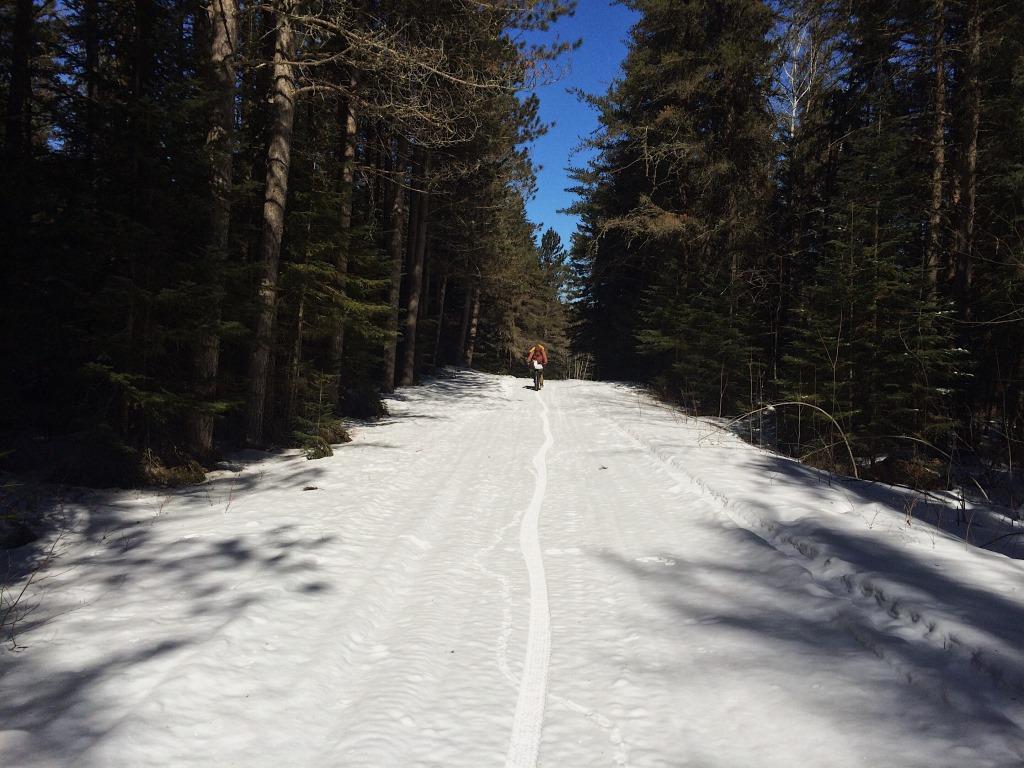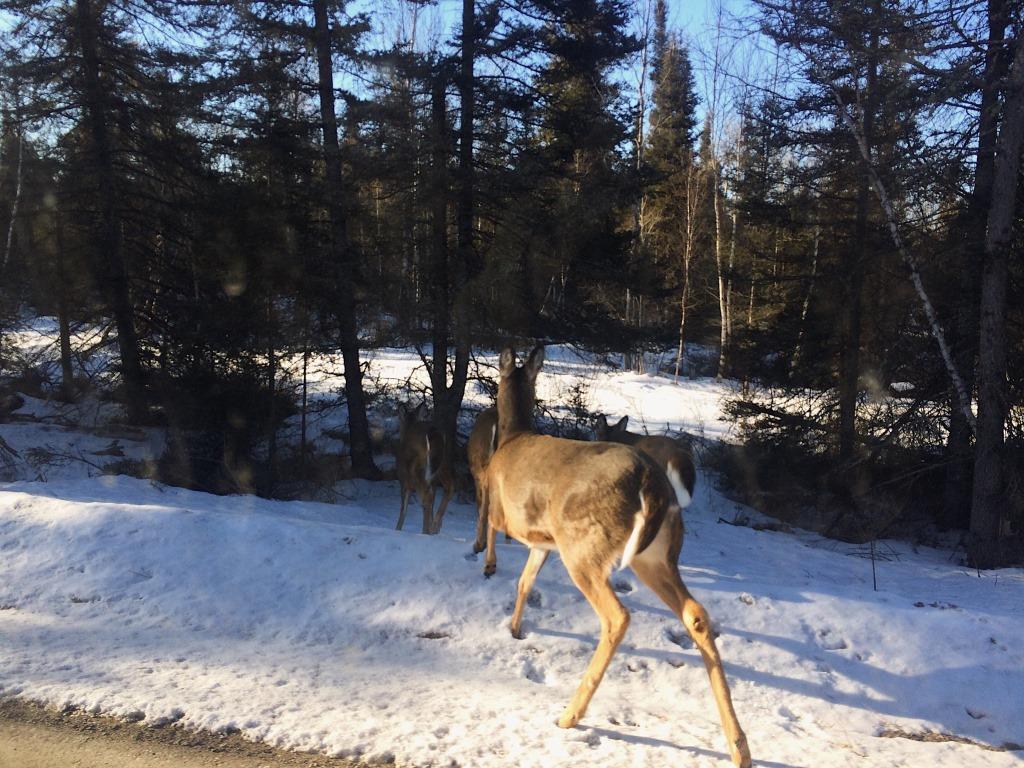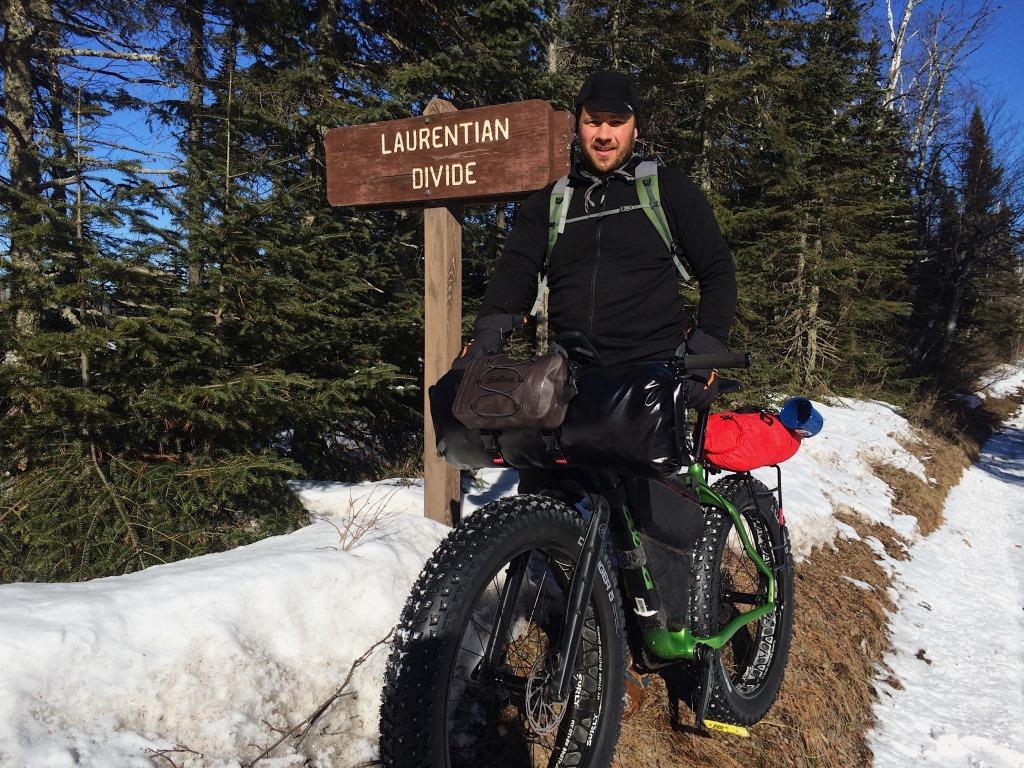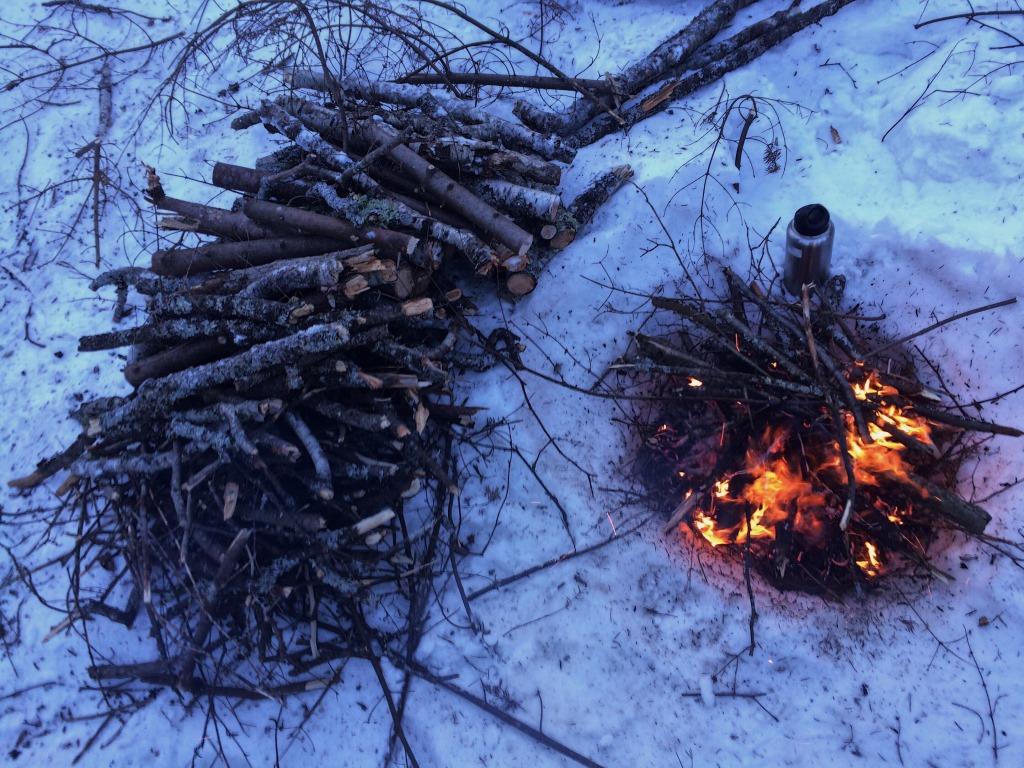Where Paths Cross
Fresh from a winter biking trip through the North country, musician Ben Weaver returns to the political and cultural fray, asking: What do we value? How do those values define our culture? How could we cultivate systems of value that stem from being in relationship to things, rather than consuming, extracting, and taking from them?

I’d rather build a fire. Rather have cold hands from gathering wood. Rather sleep in the dirt, wake up with frost and coyotes, confuse the day moon for a fish eye or scale. I can’t pay attention to the news, but I can listen for hours to what the rough land has to tell. Can follow the light through the branches, back and back. Seeking wildness: smoothly, steadily, resiliently.
For the next year, I am working on a series of trips focused around the Lake Superior and Hudson Bay watersheds in the Northeast corner of Minnesota, also known as the Arrowhead. My inspiration has many braids. I am curious about my home ground. I want to take the time to peer into the subtitles, into the ecosystems—plant, animal, land, water, human.
Experience has taught me that “knowing” is not a finite undertaking, but ongoing and incremental. The word more appropriate to such knowing is relationship: it implies an ongoing understanding, and suggests that being always evolves in places where paths cross. How will my relationships evolve as I keep going back to these places? How will they be informed through my findings, looking deeply between the trees, listening to the water, the people, and the wind? What I hope to find is more mystery, more questions and more stories. If knowing is finite then exploration ceases. And for the sake of our survival, we must have awe.
One question of great interest to me concerns value. The people who live in the Arrowhead, what do they value about it? How do those values define their culture? Are our values as material as we might assume? How could an understanding of value be cultivated that would stem from being in relationship to things, rather than consuming, extracting, and taking from them? Perhaps our human role should neither be one of control nor of viewing ourselves as irrelevant, but rather to recognize our greater connectedness to all things. How might conversations around these questions begin to take shape within the Arrowhead communities?

In the first week of March, I left Saint Paul and drove north to Ely, where I met my friends Levi Lexvold and Kellen Witschen for a short wilderness, fat-bike overnight trip. Driving down East Sheridan Street under stars and a bent moon, the front yards of Ely were spotted with hard, corny snow, melted and refrozen by the undulating weather patterns of late. The next morning, we drove 40 miles southeast on Highway 1, from Ely to the small community of Isabella, MN. The further we got from Ely, the taller the snowbanks grew along the roadside. At the spot where we left Levi’s truck and began our ride, there was almost three feet of snow on the ground.
Even though people associate fat bikes with snow (which they work great in), once there is more than four or five inches on the ground your work gets increasingly difficult, especially if you are carrying a load. In planning our route, I anticipated that most of the unplowed forest service roads would have recent enough snowmobile tracks on them that we could ride their pack. Fortunately, I was right. But there was a short section on our return leg that was impassable and saw us riding two miles of pavement back to Levi’s truck.
The first part of our ride followed an old rail grade, which at one time had been home to the Duluth and Iron Range Railroad, connecting stations like Kelly Landing, Sawbill Landing, Alger, and Two Harbors. The sun was out blaring, and a stiff wind from the north kept us hurrying through the pine shadows to keep warm.
One of the most intriguing things about the Arrowhead is that the Laurentian Divide passes right through it. The backbone to an ancient mountain range, it cuts the forest into multiple watersheds and ultimately is the deciding factor as to whether rain and snowmelt run to Lake Superior or into Hudson Bay.

Levi is convinced that Giardia comes, not from bacteria in the water, but from poor camp hygiene. Having never had it, but having drunk from many unfiltered water sources around the country, I tend to agree with him. We stopped by an open stream to refill water and eat some thick slabs of bacon he had baked off the night before. As I spend more and more time in these woods, I continue to see with increasing clarity how managed they truly are. People often forget that the Forest Service is a branch of the Department of Agriculture. At times, being in these woods feels like wandering a cornfield, only taller and with better light fragments.
After leaving the old rail bed, we followed a two-track Forest Service road, which rose and fell as it led us up the contours of the Laurentian Divide. We passed through an abundance of row-planted red pine, over a handful of stream crossings, and through a ruffed grouse management area. After two black spruce swamps we reached the Wanless Road, a county gravel road that’s maintained year-round and makes a narrow passage between Divide Lake and Tanner Lake, at which point you are on the top spine of the Laurentian Divide. We explored the shore and surrounding area around the Forest Service campground at Divide Lake, savoring the folds of calm, warm sun hanging between gusts of wind blowing off across the lake. After locating a good sheltered spot for the tent, we set forth, gathering firewood before the sun was lost to the horizon completely.
We are divided into these groups that are, in turn, defined by visual codes of recognition. We are taught that those who don’t look like us or act like us are intruders, yet in many cases our intentions and motivations for venturing out into the places that we do are more similar than they are different.
Among the many braids, a source of inspiration for these trips stems from my desire to help more people experience this place. I want to speak to the notion that we don’t have to always travel incredibly long distances and to exotic places to find adventure. In truth, I have come to believe it’s more profound not to leave home, but instead to find the profound in what’s nearby. In working to share what I have discovered about this forest, I have also come to recognize there is a responsibility to introduce it with specific intentions in mind. It is important to remember that, even though it is now designated as the Superior National Forest and managed by the federal government, there are trees here whose roots reach back to the time when the land was lived on and cared for solely by the First Nations people, who were here long before Europeans came for its timber, minerals, and furs. The Chippewa are still here and their stories, ancestors and relationships to the land must be honored and respected.
As the stars settled into the blackening sky, we dug holes in the snow to get closer to the fire’s heat, as it slowly sunk through the snow to the earth below. We stayed up late, for no other reason than proximity to the flames’ warmth.

Levi pointed out that, in the summer, he only builds a small fire; after cooking, he puts it out. “Otherwise you end up looking at the fire all night instead of the stars.” This was a good reminder to look skyward before turning in for the night.
Around 4 am, I woke up and checked the thermometer. It read -9. Not unbearable, but given the mild winter we’ve had, it felt colder than that. Perhaps the negative-degree temp seemed dramatized by the fact that highs for the coming weekend were predicted to be in the mid-60s.
After breakfast, as we packed the bikes in the cold, I was reminded of how easy we have it back home: heat at the touch of a finger, hot water, and all the other conveniences of civil life. A phrase kept running through my head, something I hear people say all too frequently when I come back from the woods: “Welcome back to reality.”
It doesn’t seem to matter if you’ve been gone a day or a year. They still say it.
Rolling up my sleeping pad and stuffing it into its sack, with cold fingers, I thought: Here, in the woods, in the cold, in the elements, whatever challenges they present, this is reality. Civilization is the smoke screen, the instigator of disconnect. Cold, wet, sun, wind—these are real. And the inability to close a door on them is what builds relationships based in the truest reality.
On the last stretch back to Levi’s truck, shouldering a few miles of pavement along Highway 1 through Isabella, a pickup truck towing a trailer full of snowmobiles came careening around a corner. The driver laid on the horn and flipped us off as he sped by. It was a strange shift in energy. Not one I wanted the trip to go out on.
We had done nothing to provoke such a reaction other than ride bikes. It reminded me how deep the disconnect goes—not just in our perception of reality, living outside vs. inside, or from the elements that make up our landscapes. I mean our disconnect from each other. We are divided into these groups that are, in turn, defined by visual codes of recognition. We are taught that those who don’t look like us or act like us are intruders, yet in many cases our intentions and motivations for venturing out into the places that we do are more similar than they are different.
In further considering why the driver would have reacted in such a way to us, I began to see something I hadn’t recognized at the onset of our trip. If not for snowmobiles, the history of logging and railroads of the past in this area our entire ride would not have been possible. The very thing we were relishing being away from was, in the end, the thing that made being here possible at all: industry, civilization, snowmobile-packed snow.
I’ve come to believe that the future is made of many small steps, and in order to protect places like the Arrowhead, a balance and understanding is going to have to be reached. No one group can expect the other to completely adopt their version of how things should be, and no one version is right. The woods and water are full of diversity. Humans are just one part of that diversity. We ought to look to the minerals, the water, and the trees that make up these ecosystems and see that embedded within each of them are incredibly resilient, flexible, and conductive traits. We must learn to act like them to protect our ability to continue living here.
In loading the bikes back into Levi’s truck bed, I found myself wishing I could sit down to a beer with the guys who flipped us off. I wished I could have the opportunity to share with them my appreciation for the snowmobile tracks that allowed us our ride. I believe, if provided the chance to listen to each other’s stories from life and the trail, we would quickly see that no matter what we do for work, or who we vote for, we would all much rather be out in the woods than stuck at a job.
This was the note I chose to hang the ending of this trip on, because where paths come together feels like common ground worth exploring.
Related links and information: I Would Rather Be A Buffalo is Ben’s most recent record, from which you can listen to a selection of songs (or buy) here: http://www.benweaver.net/listen/. Follow him on Instagram, Facebook and Twitter@benweavermusic. Visit Ben’s website: http://www.benweaver.net for more information.